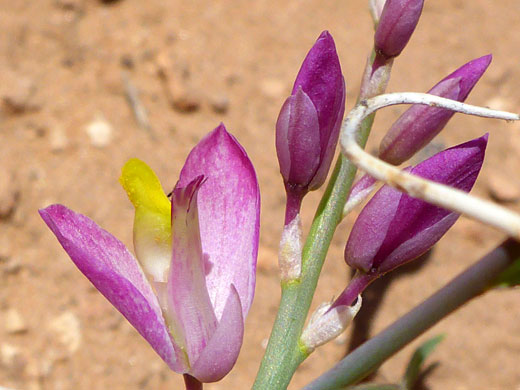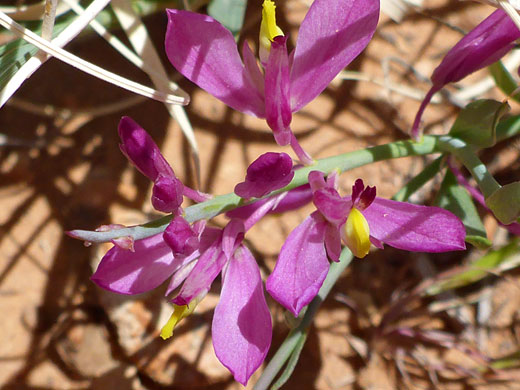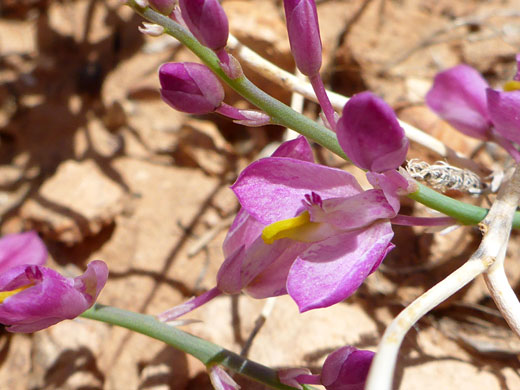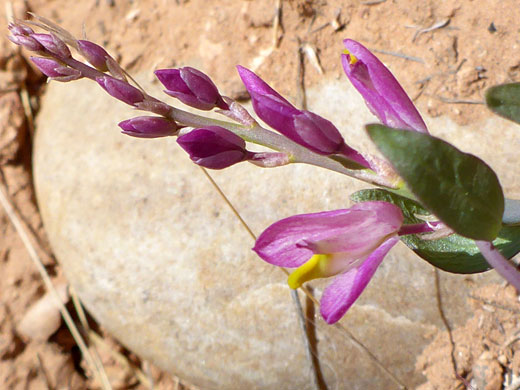Common name:
Spiny milkwort
Family:
Scientific name:
Rhinotropis subspinosa
Main flower color:
Range:
From northeast California, east to small areas of west Colorado and far northwest New Mexico
Height:
Usually up to 10 inches
Habitat:
Flats, hillsides, canyons, ridges, pinyon-juniper and ponderosa pine woodland, often on limestone, volcanic or shale-based soils; from 4,300 to 7,500 feet
Leaves:
Alternate, elliptic to obovate, up to 1.2 inches long and 0.4 inches across, hairy to almost hairless
Season:
April to June
Flowers of rhinotropis subspinosa consist of three petals and five sepals. The lower petal, the keel, is mostly pale pink but terminates in a yellow or greenish beak, its surface somewhat irregular. The other two petals, positioned above, are darker pink, as are the two lateral, petal-like, inner sepals. The three outer sepals are much smaller. Pedicels are subtended by a few deciduous bracts. The inflorescence is an elongated, unbranched cluster, a raceme, of up to 15 flowers, the stalk terminating in a thorn.
Plants are small, low growing shrubs, often mound-like, with multiple stems, erect to prostrate, woody at the base, glabrous (usually) to sparsely hairy. Leaves are attached by very short stalks.
Plants are small, low growing shrubs, often mound-like, with multiple stems, erect to prostrate, woody at the base, glabrous (usually) to sparsely hairy. Leaves are attached by very short stalks.
All Contents © Copyright The American Southwest | Comments and Questions | Contribute | Site Map







